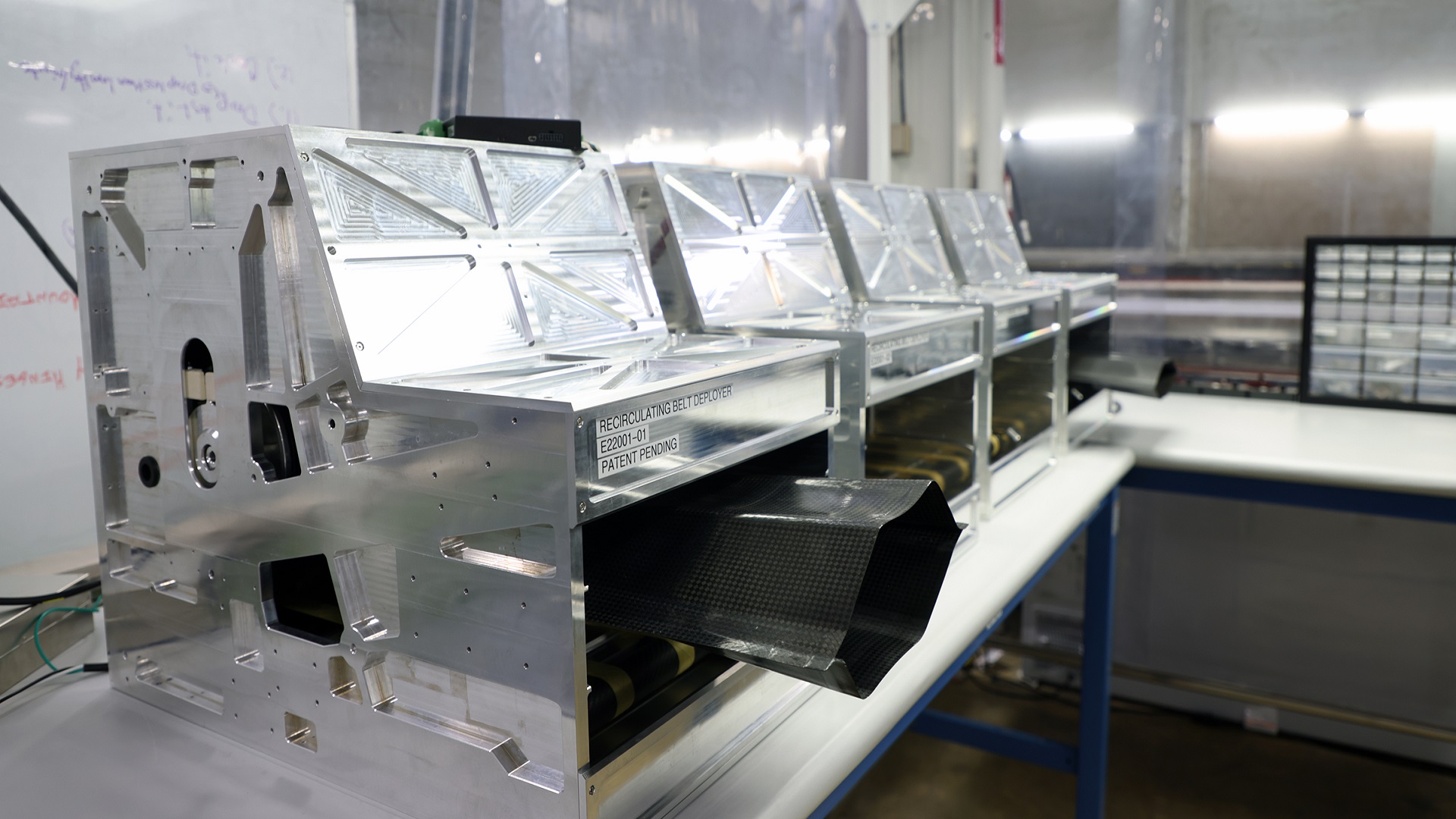Problem
In pioneering a new type of design, Opterus is solving problems for which no previous solutions exist. Each new project requires extensive research and development, testing, and custom tooling to complete.
Opterus’ deployable space structures are manufactured using advanced ‘High Strain Composite’ (HSC) materials offering 2x higher bending strains, 5x mass reduction, 8x stiffness, and 20x dimensional stability compared to conventional spring steels used in prior art deployable space structures.
To manufacture HSCs, conventional composite tooling offered limited design complexity while costing thousands of dollars and weeks to months per iteration. Inversely, desktop 3D printers were affordable and fast but only suitable for light-duty, low heat applications.
Solution
Opterus’ engineering team turned to high temperature 3D printing to develop their designs and manufacture low-cost, full-scale composite tooling. In their search, the engineering team found the AON M2+ with a sizeable 450 x 450 x 565 mm heated build volume and open access to engineering-grade and high-performance polymers.
Implementation
Utilizing the AON M2+ and carbon fiber peek, Opterus manufactures composite molds for thousands of dollars less and weeks faster. CF PEEK’s properties were ideal for the application, with a low coefficient of thermal expansion (CTE) and ability to withstand curing temperatures that can exceed 180°C. After a bit of light sanding and J-B Weld or Teflon tape, the molds take minimal preparation from printer to prepreg layup.
Outcome
With their technology and process, Opterus aims to bring the next generation of high performance space structures to market ranging from small satellite antennas to solar arrays up to 10,000 sqm (6.2 sq. mi.) for use in solar power beaming, solar sails, and in-space manufactured megawatt solar arrays.
The company is positioned to achieve initial space flight heritage by mid-2024 for novel, advanced deployable spacecraft structures including composite rollable booms, deployable parabolic reflectors, and deployable solar array structures for small and large spacecraft. These milestones will build upon years of new technology demonstration and maturation, adding to Opterus’ portfolio of products in orbit today.

